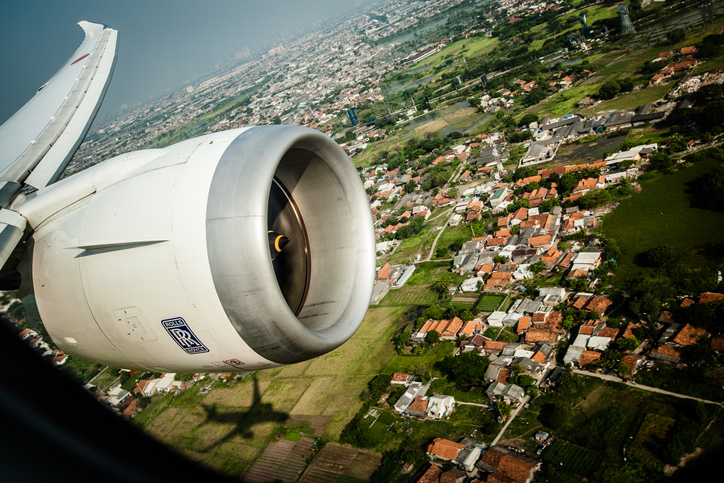ii view: Rolls-Royce's latest update causes turbulence
Cash burn for 2020 is above forecast, but the recent fundraising has left Rolls confident long-term.
11th December 2020 11:47
by Keith Bowman from interactive investor
Cash burn for 2020 is above forecast, but the recent fundraising has left Rolls confident long-term.

Trading update for 11 months to end November
- Large Engine Flying Hours (EFH) year-to-date at 42% of 2019 level
- EFH of 33% for October and November combined compared to 2019
- Expected full-year cash outflow of £4.2 billion, up from £4 billion previously
Chief executive Warren East said:
“We have taken decisive actions to protect and reposition our business in difficult and uncertain trading conditions, including the impact from a second wave of Covid-19. We have made rapid progress on our restructuring programme and the consolidation and reorganisation of our Civil Aerospace footprint is well under way. Our £5 billion recapitalisation package in November was well supported and has increased our resilience and strengthened our balance sheet. The outlook remains challenging and the pace and timing of the recovery is uncertain. However, our actions have given us a strong foundation to deliver better returns as our end markets improve and we continue to drive our ambition of delivering more sustainable power to support the creation of a net-zero carbon economy.”
- 10 shares hitting new highs and which could keep rising
- 4 reasons to own Lloyds and other bank shares
ii round-up:
Aircraft engine-maker Rolls-Royce (LSE:RR.) today raised its expected full-year cash burn to £4.2 billion from a previous £4 billion, given a second wave of the pandemic and subsequent reduction in air traffic.
Rolls is paid by its airline customers depending on how many hours its engines fly. Engine Flying Hours (EFH) for October and November combined was 33% of last year's equivalent. However, that is up from 29% in the third quarter of 2020 and just 24% in Q2. For 2020 so far, EFH is running at 42% of 2019 levels.
Rolls-Royce shares fell by more than 8% in UK trading, leaving them down by around a half year-to-date. Shares for plane makers Airbus (EURONEXT:AIR) and Boeing (NYSE:BA) are both down by around 30% in 2020. British Airways owner IAG (LSE:IAG) shares are down by over 60%.
The timing of deliveries of Boeing 787 aircraft to airlines could also impact group cash burn or payments out over December. Any deliveries made would trigger concession or discount payments by Rolls-Royce on the engines for those planes to the airline.
However, management guidance for the year ahead remains unchanged. It continues to expect a move into positive cash flow during the second half of 2021. Restructuring plans to generate £1.3 billion of cost savings by 2022 remain on track.
The defence business has stayed resilient with a strong order book, while recent months have seen some early indications of a pick-up in orders for its Power Systems business.
Year-end net debt is expected to come in at between £1.5 billion and £2 billion, excluding lease liabilities of approximately £2.1 billion, with group cash liquidity ranging between £8.5 billion and £9 billion.
Full-year results are scheduled for 11 March.
ii view:
Rolls-Royce operates across the three divisions of civil aerospace, power systems and defence. It has around 13,000 plane engines in service powering more than 30 different makes of commercial aircraft. Its defence engines power around 16,000 military aircraft and helicopters, while its Power Systems division sell around 20,000 reciprocating engines per year. In 2019, civil aerospace generated just over half of all sales, power systems around a quarter and defence the rest.
For investors, a significant reduction in flights under the pandemic has hit the company hard. Now, a second wave of European lockdowns has hindered the recovery in Engine Flying Hours, while uncertainty regarding further lockdowns in places such as the US cannot be ignored. That said, the planned roll-out of vaccines in early 2021 offers hope, with the group’s recent £5 billion total fundraising giving it more time to leave its own corporate engine ticking over as it hopes for an acceleration in the second half of 2021. For now, despite what is likely to a continued bumpy ride, Rolls may have weathered the very worst of the storm, with existing investors likely to remain seated.
Positives:
- Successfully raised a total of £5 billion
- £1.3 billion cost savings plan on target
Negatives:
- Highly uncertain outlook due to Covid-19
- Dividend suspended
The average rating of stock market analysts:
Hold
These articles are provided for information purposes only. Occasionally, an opinion about whether to buy or sell a specific investment may be provided by third parties. The content is not intended to be a personal recommendation to buy or sell any financial instrument or product, or to adopt any investment strategy as it is not provided based on an assessment of your investing knowledge and experience, your financial situation or your investment objectives. The value of your investments, and the income derived from them, may go down as well as up. You may not get back all the money that you invest. The investments referred to in this article may not be suitable for all investors, and if in doubt, an investor should seek advice from a qualified investment adviser.
Full performance can be found on the company or index summary page on the interactive investor website. Simply click on the company's or index name highlighted in the article.